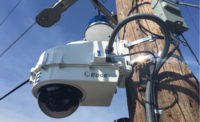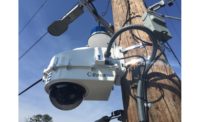Twenty years ago nine-year-old Amber Hagerman was abducted while riding her bicycle near her home and later found murdered in Arlington, Texas. Her tragic death was the impetus for the Amber Alert program, which is used to help find missing children. Witnesses mentioned a black pickup truck observed at the crime scene. But that slim lead was not enough to solve the case. “Certainly we would have welcomed additional video evidence in this case,” says Arlington police spokesman, Christopher Cook. “Our main storyboard on what happened came from an eyewitness.”
Had the crime occurred today detectives would have had access to literally hundreds of video sources from ATMs, home and business security systems, and other sources to find that vehicle and have more information to solve the case.
That’s what happened in 2015 when a young woman was gunned down in the parking garage of an upscale apartment building in Dallas. Surveillance video showed an older model Jeep Cherokee following the victim into the garage just before she was shot and killed. The footage was immediately released to the public through multiple channels — the news media, social media and Web pages. In a short time the owner of the vehicle came forward and identified who was driving it at the time of the murder, which led to arrests in what otherwise would have been a difficult-to-solve murder for hire.
While the use of video from electronic security systems isn’t new, it has become a growing and significant part of the war on crime. But too often the role the industry plays in these advances in crime fighting is rarely mentioned.
“For years, high quality video was limited to security systems for business and government buildings. Now, with new technology in home security devices, we are seeing increasing numbers of customers post videos on social media of suspicious activity in their neighborhoods,” says Bob Tucker, director of corporate affairs for ADT, Boca Raton, Fla. “Too often, the security industry does not get credit from the news media for these advances in crime fighting.”
Chief Mac Tristan of the Coppell, Texas, police department adds, “The first thing law enforcement does when investigating any crime is look for cameras. The key is the quality of the image and the fact that bad guys are realizing this and attempting to cover their faces while committing crimes.”
Chief Tristan notes that tactic isn’t foolproof because the suspect’s gait, manner of dress, height and weight are still helpful in his or her identification, and video often provides vehicle descriptions and license numbers.
Even a basic Google search shows that many criminals make no attempt to prevent identification when committing a crime. Others are not aware that cameras in ATM machines and other devices also can be used to identify them.
In one Texas county investigators were able to document a criminal’s entire crime spree from his initial theft of a motorcycle to his stalking a woman outside a shopping center. He was located by police during their investigation of an incident in which he was shot by police while trying to escape.
Advances in technology from the electronic security industry also have helped make the industry a better partner with law enforcement. “Many police departments are considering faster response to alarms where video allows verification of suspicious activity,” says Stan Martin, executive director of the Security Industry Alarm Coalition. “Some departments up the priority of calls where there is a high probability that a crime is in progress.
“The industry and law enforcement have worked together to define national standards to help establish a baseline of information for departments that wish to move in that direction,” Martin says.
Retired detective Mark Simpson of the Arlington, Texas, police department notes another advantage that video provides to investigators. While there was no security footage of Amber Hagerman, there was video of the little girl beforeshe was abducted.
“We prefer to distribute video over a picture,” Simpson says. “It actually brings that victim to life for the public and as a result they become more involved.”
Martin adds, “People once thought of electronic security primarily as a deterrent. Now, as we work with law enforcement leaders nationwide, we are seeing a growing sense of true partnership and finding opportunities to help public safety agencies better utilize and regulate, when appropriate, the amazing new technology our industry is making available.”
One new development has been the advent of programs to ask the owners of security systems to register their video cameras with local police departments so officers can easily identify sources of video when there has been a crime.
Officials of the Verona, N.J., Police Department have initiated such a voluntary program, stating that, “Video surveillance footage has become a crucial element in investigating and solving crimes.”
In Chicago, CBS News recently reported that crime on the CTA — the city’s mass transit system — was down 25 percent in 2015 compared with 2014. The article explained that the CTA, since 2011, “has vastly expanded its network of surveillance cameras, with a total of approximately 23,000 cameras on its buses, trains, and platforms, leading to hundreds of arrests.”
The article, published on January 27, quotes CTA President Dorval Carter Jr.: “The CTA has doubled the number of cameras we have, and the cameras are now located on every bus, train, and at all of our rail stations. Last year, images led to the arrest of 256 individuals who committed crimes on or near CTA. That is an increase of 8 percent over 2014.”
The magazine Governing recently reported that, “Video was a critical component in finding and prosecuting the bomber responsible for the Boston Marathon bloodbath.”
One expert has stated video holds more evidence than any other source — more than DNA, crime scene analysis or eyewitness testimony.
The magazine reported that even as first responders arrived on the scene in Boston, police were already securing video footage from a vast network of surveillance cameras keeping watch on downtown Boston.
“Today’s clarity is incredible,” says retired FBI operative Danny A. Defenbaugh, founder of Defenbaugh and Associates, and former special agent in charge of the Dallas field office of the FBI. “Even in mass events you can get a picture of an individual person from a crowd of one million. In areas such as homeland security there are multiple cities in the forefront that utilize the most up-to-date technology, which is thwarting crime and terrorism.”
New Channels of Communications
There also have been dramatic changes in how video from home and business security systems is distributed to the public. In the past law enforcement agencies would hold news conferences and distribute pictures to the local news media. In the early days of video security the pictures were often grainy and it was difficult to identify the criminals involved. The advent of social media and Web pages changes the equation. Because news outlets work hard to monetize their Web pages with advertising, now broadcasters, including radio stations, urge listeners and viewers to look at suspects and crime video on their websites. Instead of hoping someone was watching the news, now the information is available 24/7.
As social media took hold, video became available for wider distribution on social media sites. For example, while a local television station’s late news might reach one-sixth of the region’s viewers, Facebook has 1.55 billion monthly active users. The more people who see video of a crime the more likely it is someone will know those involved and notify authorities.
Another change has been the availability of neighborhood-specific websites that allow an exchange of information among neighbors as well as the police. The popular website Nextdoor allows members of a neighborhood to discuss suspicious activity and share video from home security systems. While a few people have suggested that Nextdoor is a threat to the home security industry, many of the discussions involve where to purchase the best security system. Public safety agencies are catching on and, according to one report, Nextdoor has agreements with hundreds of police departments to stream neighborhood-specific information through the site. According to one article, one-fifth of the activity on the site is local public safety issues.
Looking to the future Martin sees even more collaboration through the 15 statewide alarm management committees SIAC has established, as well as continued relationships with the International Association of Chiefs of Police and the National Sheriffs’ Association. “New technology provides new challenges and opportunities,” Martin says. “We want to be sure we have a say in how these issues evolve.”
Too often the public thinks of electronic security as only home alarm systems and doesn’t recognize that security systems protect homes, schools, churches and vital infrastructure. We should recognize that the industry must continue to promote its contribution to public safety. We can’t count on people putting two and two together and recognizing the important role the industry plays in national security, public safety and crime prevention.






